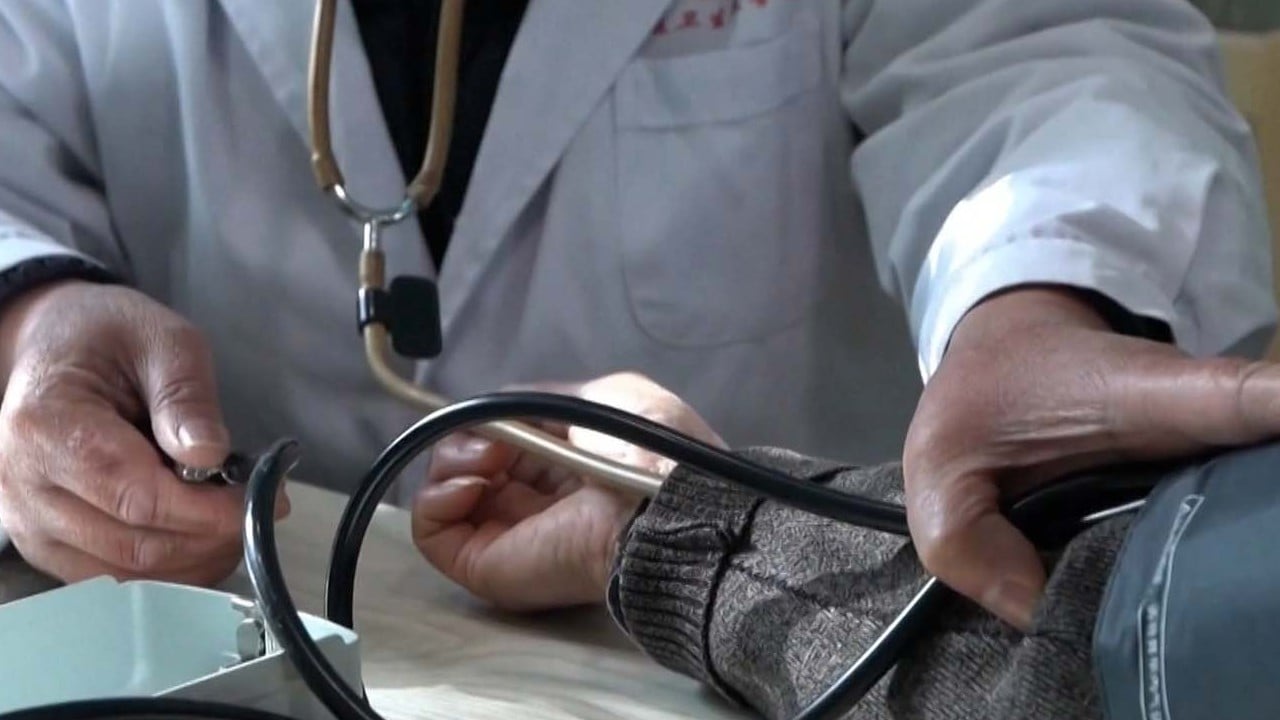
Beijing’s Covid wave may have peaked but China’s tsunami of cases is months from easing: experts
- Unverified document online suggests that about 248 million people around the country were infected from December 1 to 20
- Things may not get back to normal until February or March, Shanghai health specialist says
Given the high transmissibility of the Omicron variants now circulating in China, the increase in cases is expected to be sudden but the size of the population and the regional disparities mean the peaks may vary from region to region.
In Shanghai, Zhang Wenhong, director of the infectious diseases department at Fudan University’s Huashan Hospital, told a forum on Thursday that infections in the city might peak in a week but the outbreak would be longer.
“I think the infections in Shanghai will peak in a week and after the peak the outbreak will continue for one to two more months,” he said
However, according to a memo purportedly from a National Health Commission meeting on Wednesday, there were nearly 37 million new infections nationwide on Tuesday.
The document was circulated online and cannot be independently verified. The official report of the meeting did not mention government projections, but the estimates in the memo tallied with those of other experts.
According to the purported memo, about 248 million people around the country were infected from December 1 to 20, accounting for around 17.56 per cent of the population. It said about half of the population in Beijing and Sichuan province had been infected.
Between 20 and 50 per cent of the people are estimated to be infected in Tianjin municipality, and the provinces of Hubei, Henan, Hunan, Anhui, Gansu and Hebei.
It said daily new cases had already peaked in Beijing, but the city was facing immense pressure under the weight of severe cases.
Morgues overwhelmed: why China’s new Covid crisis is all of its own making
Ben Cowling, chair professor of epidemiology and head of epidemiology and biostatistics at the University of Hong Kong’s school of public health, agreed that some cities like Beijing might have already passed their peak.
“I think nationwide the peak in infections will be in early January. Some cities like Beijing may already have passed their peak,” he said.
Wang Guangfa, a respiratory expert at Peking University First Hospital, told medical news portal Yixuejie that the capital should brace for a peak in severe diseases in one or two weeks, adding that cases would ease only after the Lunar New Year holiday in late January.
“We probably have to wait until February or March before things return to normal,” he was quoted as saying.

Kwok Kin-on, an assistant professor of public health at the Chinese University of Hong Kong, said the peak in severe disease and hospitalisation usually came after the infection peak.
He agreed that it would take about a month for the wave to sweep across the cities.
“Data from the mainland said the effective reproductive number is 10 to 17, if you use this to make an estimate, it will only take half a day or a day for the infections to double,” Kwok said, referring to the average number of secondary cases per infectious case.
“The whole wave will take around one month.”
However, the peak might hit different parts of the country at different times. The peaks for rural areas might arrive later, though the mass movement of people during the Lunar New Year might bring them forward, he said.
China must import mRNA vaccines to stop Covid-19 ‘disaster’: US health experts
Multiple Omicron variants are now circulating in China. Variant BF.7 – which is short for BA.5.2.1.7 – and BA 5.2 are now driving the surges. BF.7 is by far the most transmissible variant with a reproductive number of between 10 to 18.6 in Beijing, according to scientists. The number for the Delta variant, which was dominant last year, is 5 to 6.
But BF.7 did not cause a huge surge in countries with hybrid immunity as a result of vaccination and previous infections.
Zeng Guang, former chief scientist at the Chinese Centre for Disease Control and Prevention, told China Business Journal that it would take two to three months for the different parts of the country to peak.
Mark Woolhouse, chair of infectious disease epidemiology at the University of Edinburgh, agreed it might take more time for the virus to sweep throughout China.
“Omicron waves tend to be quite short and sharp. Hong Kong’s Omicron wave earlier this year peaked within a month,” Woolhouse said.
“However, Omicron will take time to work its way around China so I expect the current wave to last several months at least.”
Mark Jit, professor of vaccine epidemiology at the London School of Hygiene & Tropical Medicine, said ideally some mitigation measures might be able to delay the peak.
“We actually don’t want the epidemic to peak quickly as this is more likely to overwhelm the health system – the best would be to ‘flatten the curve’ and to have an epidemic that takes longer to peak, but has a lower peak.”
Dale Fisher, chair of infection control at the National University of Singapore’s National University Hospital, agreed that flattening the curve was important for China.
“It’s more important to think about the height of any peak as that is what will impact the health system. China needs to allow a controlled spread as virtually everyone will become infected and you want this number spread out over 6 to 12 months.”
But Kwok said it would be difficult in the case of China given the tsunami was already two weeks old and the public was already tired of mitigation measures.



